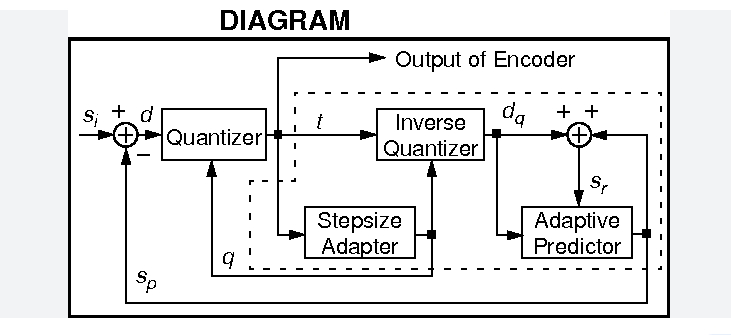Author: SINREY Publish Time: 2023-11-16 Origin: Site








Adaptive Differential Pulse Code Modulation, or ADPCM, was first used in digital communication systems.
ADPCM (ADPCM Adaptive Differential Pulse Code Modulation) is a lossy compression algorithm for 16bit (or higher) sound waveform data. It stores the 16bit data of each sample in the sound stream as 4bit, so the compression ratio is 1 :4. The compression/decompression algorithm is very simple, so it is a good way to obtain high-quality sound with low space consumption.

This algorithm takes advantage of the correlation between speech signal samples, and uses adaptive prediction and adaptive quantization according to the non-stationary characteristics of the speech signal. That is, the parameters of the quantizer and predictor can adapt to the statistical characteristics of the input signal. Or close to the optimal parameter state, it can provide network-level voice quality at the rate of 32kbps◎8khz. Now we are using the IMA ADPCM algorithm. This algorithm uses a simple mapping method to adjust the quantization step size. For an input PCM value X(n), compare it with the X(n-1) prediction at the previous moment. Difference the value to get d(n), then encode d(n) according to the current quantization step, and then use the encoded value of this sample point to adjust the quantization step, and at the same time, get the predicted value of the current sample point for the next A sample point encoding is used. Through this algorithm, the sample points can be encoded into a 4-bit code stream, one sign bit and three amplitude bits.
The algorithm is relatively simple, and the operation is simplified through mapping. For the encoded data, we use the wav file format, which packages the encoded data stream and consists of a file header and a data stream. The file header indicates the format, sampling rate, bit rate, and Information such as block length, number of bits, and number of channels. The data code stream is in units of blocks. The block header points out the predicted value and index value of the beginning of the block. The high four bits and low four bits of each byte in the code stream correspond to one PCM respectively. Currently, this algorithm is widely used in digital music boxes and digital recorders due to its simple and practical characteristics.
ADPCM (Adaptive Differential PCM)
Developed by: ITU-T
Characteristics: ADPCM combines the adaptive characteristics of APCM and the differential characteristics of the DPCM system, and is a waveform encoding with relatively good performance. Its core idea is:
①Use the adaptive idea to change the size of the quantization step, that is, use a small quantization step (step-size) to encode small differences, and use a large quantization step to encode large differences;
② Use past sample values to estimate the predicted value of the next input sample so that the difference between the actual sample value and the predicted value is always the smallest.
Advantages: low algorithm complexity, small compression ratio, and the shortest encoding and decoding delay (compared to other technologies)
Disadvantages: Average sound quality